Digital Poster
Applications of Foundation Models
ISMRM & ISMRT Annual Meeting & Exhibition • 10-15 May 2025 • Honolulu, Hawai'i

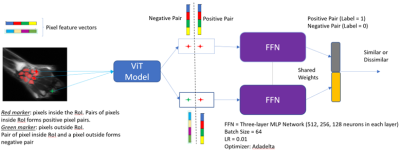 |
Computer Number: 33
4003. Localization
of Non-Isocentric Wrist Anatomy with Few-shot Foundation Models
G. R. Madhumani, D. Anand, D. Shanbhag
GE HealthCare, Bangalore, India
Impact: With as few as 6 labeled images, localization
adapter trained with self-supervised visual features
performed significantly better than CNN based few-shot model
that used as many as 28 image-mask pairs. Demonstrated 3D
localization capability from models trained on 2D images.
|
|
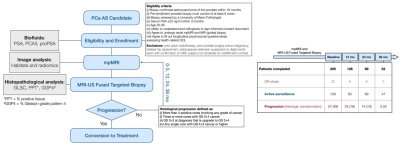 |
Computer Number: 34
4004. Patient
Selection for Active Surveillance for Prostate Cancer based on
Deep Features from U-Found: An MRI-based Foundation Model of the
Prostate
A. Breto, N. Lowry, V. Wallaengen, A. Algohary, S. Punnen,
R. Stoyanova
University of Miami, Miami, United States
Impact: We
present an application of novel MRI-based
foundation model of the prostate to
assess prostate cancer progression risk for AS patients,
thereby providing essential data for clinicians that can
prospectively improve AS patient selection.
|
|
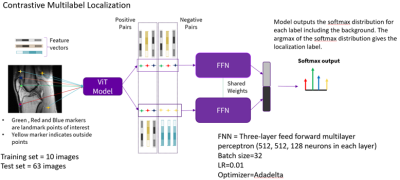 |
Computer Number: 35
4005. Few-Shot
Contrastive Multilabel Localization of Knee MR Images with
Self-Supervised Foundation Model
G. R. Madhumani, D. Anand, D. Shanbhag
GE HealthCare, Bangalore, India
Impact: Multilabel contrastive model trained by features
extracted from FM with few labeled examples showed promising
results for localizing multiple RoI's on knee images.
Multilabel model showed excellent localization across knee
slices by preventing false positives.
|
|
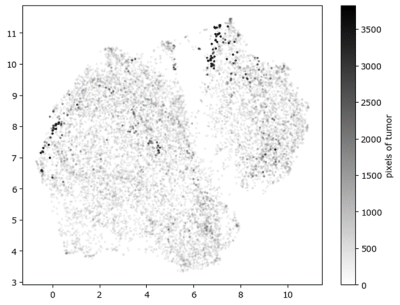 |
Computer Number: 36
4006. Self-supervised
Learning Network on Large Prostate Cancer mpMRI Dataset: Towards
A Foundational Model of the Prostate
N. Lowry, A. Breto, V. Wallaengen, A. Algohary, R. Stoyanova
University of Miami, Miami, United States
Impact: To
the best of our knowledge, U-Found is
the first foundation-like model developed for prostate
mpMRI. The embeddings, combining cancer and overall prostate
characteristics features can be used in comprehensive
modeling of cancer progression or response to therapy.
|
|
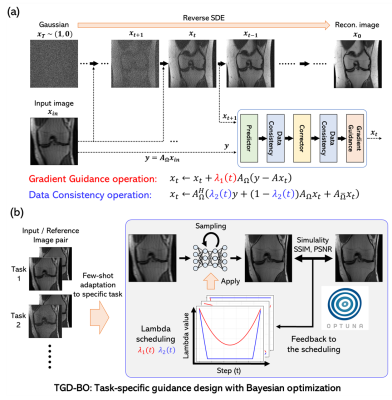 |
Computer Number: 37
4007. TGD-BO:
Task-specific Guidance Design with Bayesian Optimization using
unconditional diffusion models for image restoration problems
N. Fujita, Y. Terada
University of Tsukuba, Tsukuba, Japan
Impact: We proposed a guidance design method adaptable
to any image restoration problems and verified its
effectiveness. This versatile framework enables diffusion
model to handle multiple MRI restoration tasks without
task-specific training, potentially serving as a foundation
model.
|
|
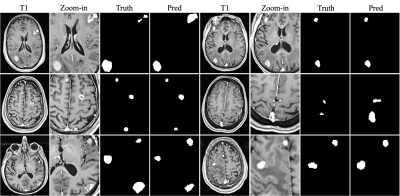 |
Computer Number: 38
4008. Using
the SAM2 Foundation Model for Zero-shot Delineation of
MRI-detected Brain Metastases for Stereotactic Radiosurgery
C-W Chang, R. Qiu, H-K Shu, S. Kahn, L. Sudmeier, J. Fair,
M. Giles, H. Mao, Z. Tian, X. Yang
Emory University, Atlanta, United States
Impact: This brain metastases delineation tool has been
shown to enhance the efficiency of treatment planning,
potentially improving the effectiveness of stereotactic
radiosurgery for brain metastases. Such advancements could
lead to better clinical efficiency and patient outcomes.
|
|
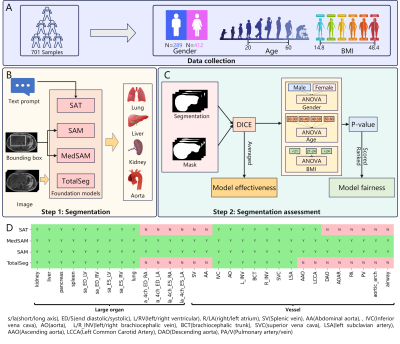 |
Computer Number: 39
4009. Evaluation of
effectiveness and fairness of foundation models in multi-organ
segmentation
Q. Li, Y. Zhang, Y. Li, Y. Zhang, L. Sun, M. Sun, Q. Li, Z.
Wang, M. Liu, X. Hu, S. Wang, C. Wang
Human Phenome Institute, Fudan University, Shanghai, China
Impact: This study systematically evaluates the
variations in segmentation effectiveness of foundation
models across different organs and the fairness issues,
which finds the shortcomings of the current foundation
models and plays an important role in guiding future
improvements of foundation models.
|
|
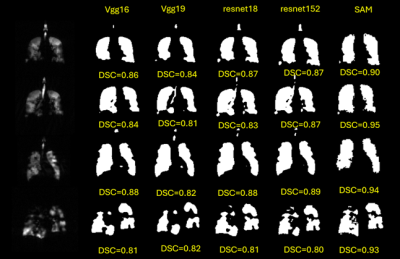 |
Computer Number: 40
4010. Data-Efficient
Lung Segmentation Using Foundational Models: A Comparative Study
of SAM and CNNs for Hyperpolarized Gas MRI
R. Babaeipour, M. Fox, G. Parraga, A. Ouriadov
Western University, London, Canada
Impact: This study demonstrates the potential of
foundational models like Segment Anything Model (SAM) to
significantly improve lung segmentation accuracy using less
data, opening new avenues for medical imaging in clinical
settings where acquiring large, annotated datasets is
challenging.
|
|
 |
Computer Number: 41
4011. Optimizing
Cardiac MR Image Segmentation: Fine-Tuning the Foundational
Segment Anything Model (SAM)
T. Geroski, A. Amini
University of Louisville, Louisville, United States
Impact: Fine-tuning of the foundational model SAM for
cardiac MRI offers enhanced segmentation accuracy, enabling
precise assessments of heart structure and function. This
advancement supports improved diagnostic workflows and
potential early detection in conditions like heart failure
and cardiomyopathy.
|
|
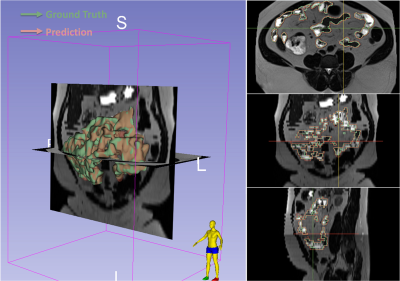 |
Computer Number: 42
4012. Automated
Segmentation of the Small Bowel and Body Composition on MR
Enterography: initial experience
F. Restrepo, M. Yuce, K. Yasokawa, D. Feldman, A. Geahchan,
P. Brachmann, A. Hashmi, C. Lippert, B. Taouli
Icahn School of Medicine at Mount Sinai, New York, United States
Impact: These results lay a foundation for the
application of DL models to CD patients with small bowel
involvement, both in automated detection of affected bowel
segments and in accurate determination of body composition,
potentially providing outcome information in these patients.
|
|
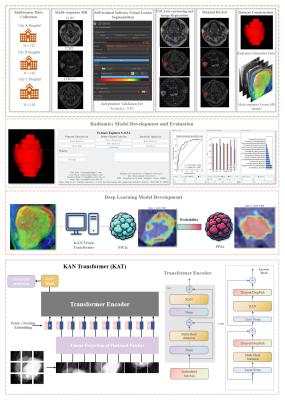 |
Computer Number: 43
4013. Advancing
Parotid Tumor Diagnosis with KAN Transformer: Precise
Differentiation of Pleomorphic Adenoma and Warthin Tumor: A
Multicenter Study
W. Mai, L. Zhang, D. Zhang, J. Zhong, J. Tan, Y. Chen, W.
Liu, X. Liu, X. Hua, C. Shi
the First Affiliated Hospital of Jinan University, Guangzhou, China
Impact: The KAT model provides precise early diagnosis
of benign parotid tumors, even with limited MRI data. These
findings could extend to other tumor types, improving
diagnostic accuracy and supporting individualized treatment.
|
|
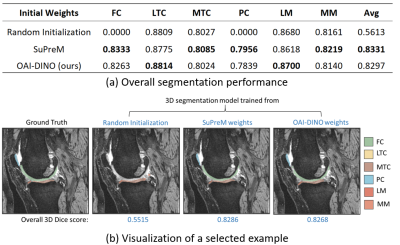 |
Computer Number: 44
4014. Self-supervised
Pretraining on OAI data for 3D Knee MRI Analysis
X. Wang, L. Hazan, M. Yang, S. Rabinovici-Cohen, X. Li
Cleveland Clinic, Cleveland, United States
Impact: Our study has leveraged the OAI database and
demonstrated the effectiveness of self-supervised
pretraining for 3D knee MRI. Our approach enhances
downstream task performance, inspiring further study on
advancing automated 3D medical imaging analysis without
labeled data.
|
|
 |
Computer Number: 45
4015. Development
of an Automated Deep Learning Diagnostic Platform for Medical
Imaging
J. Zhang, Y. Song
MR Research Collaboration Team, Siemens Healthineers Ltd., shanghai, China
Impact: This platform enhances clinical accessibility to
deep learning diagnostic tools, supporting high-precision
diagnostics and interpretability through an intuitive
interface, and reducing the technical barrier to AI in
medical imaging.
|
|
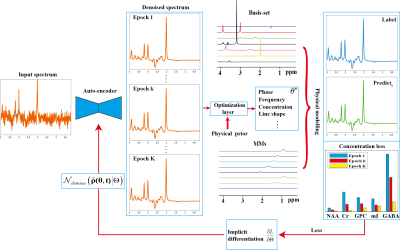 |
Computer Number: 46
4016. Multi-vendor
physical intelligent network for accurate quantification of
magnetic resonance spectroscopy metabolites
Z. Tu, J. Zhang, Y-H Chu, L. Lin, X. Jiang, J. Wang, Q. Xu,
D. Guo, X. Qu
Xiamen University, Xiamen, China
Impact: The proposed method utilizes a differentiable
least squares network layer to achieve precise
quantification of low-concentration metabolites, providing
more accurate quantification metrics for disease diagnosis.
|
|
|
Computer Number:
4017. WITHDRAWN |
||
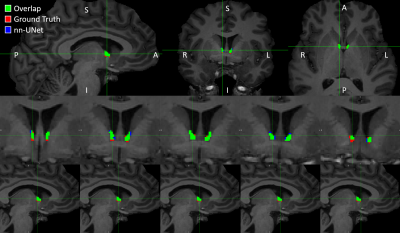 |
Computer Number: 47
4018. Towards
Standardized BNST Segmentation: A Deep Learning Model for
Precise and Reproducible 3D T1 MRI Analysis
O. Ortiz, R. Loke, J. Kramer
University of British Columbia, Vancouver, Canada
Impact: This model enables automatic, precise BNST
segmentation, advancing research on stress-related brain
pathways, supporting personalized treatments, and enhancing
diagnostic accuracy in psychiatric conditions. Automated
BNST analysis facilitates early detection, improves patient
outcomes, and accelerates large-scale research
possibilities.
|
The International Society for Magnetic Resonance in Medicine is accredited by the Accreditation Council for Continuing Medical Education to provide continuing medical education for physicians.